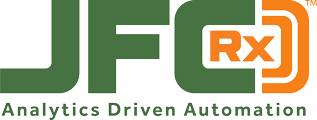This website uses cookies so that we can provide you with the best user experience possible. Cookie information is stored in your browser and performs functions such as recognising you when you return to our website and helping our team to understand which sections of the website you find most interesting and useful.

The Future of Senior Care: How Automated Pharmaceutical Packaging is Changing the Game
America stands on the brink of a senior care crisis. According to a recent Harvard University housing study, nearly 70 percent of older adults (above age 65) are expected to require long-term support at some point in their lives. The report notes that as Baby Boomers reach age 80 by 2026, the share of households headed by an adult age 80 and over will more than double between 2021 and 2040, increasing the percentage of the population anticipated to need long-term care.
Long-term care (LTC) facilities offer rehabilitative, restorative, or skilled nursing care and currently host 1.2 million beds, with 13 million recorded as using their services in 2000. And the number of people who will require long-term care is expected to double or triple by 2050, while these facilities struggle with finances and skilled labor shortages. Care providers, pharmacists, and nurses are all in short supply.
Long-term care services reach beyond the doors of the facilities themselves. Most older adults, 97.5% as of 2021, live in their own homes or with a family member in intergenerational housing. Increasingly, programs are being devised to provide services to a population that needs assistance but doesn’t need admission to the facility. This, however, creates new challenges for the LTC pharmacy staff serving a home-based population, including compliance and medical adherence.
One possible answer to the multiple challenges faced by long-term care facilities is pharmaceutical automation. Automated pharmaceutical packaging can help alleviate labor challenges, streamline efficiencies for long-term cost savings, and aid with compliance and medical adherence. A short look at the newest program, PACE, can help highlight the advantages of pharmaceutical automation.
At Home Care Sets Up New Challenges
There is a significant push within the long-term care sector to provide care for patients in their own homes in response to staffing shortages and limited space. The Programs of All-Inclusive Care for Elderly (PACE) offers a comprehensive solution by providing frail, community-dwelling elderly individuals with coordinated medical and social services.
An interdisciplinary team of care providers enables PACE participants to remain within their own home, rather than receiving care in a nursing home. While it is less expensive and more desirable for many patients to remain at home rather than receive care within a facility, funds for the program are capped. Automation can enhance the level of care and provide better patient care while enabling providers to leverage funds more effectively.
One of the challenges posed by in-home care, whether through a PACE program or otherwise, is medical adherence and compliance for pharmaceuticals, due to the complexity and variability of individual healthcare needs, particularly among the elderly or those with chronic conditions. Several factors contribute to this challenge:
- Complex medical regimens: As people age, medication regimens often become more complex. Complex medication regimens require precise timing and dosages. Without the structured environment in a care facility, patients might be liable to forget doses, take medication at the wrong time, or in general, or become confused about medication schedules.
- Limited supervision: At home care inherently provides less direct supervision by healthcare professionals compared to care in a facility. There is less oversight to make sure medications are taken as prescribed.
- Cognitive and physical limitations: Older adults might have cognitive impairments or physical limitations that make it more difficult to manage medications without assistance. This can lead to skipped doses or incorrect administration of medication.
The Transformative Impact of Pharmacy Automation
Pharmacy automation encompasses a variety of technologies aimed at optimizing the dispensing of medications. Medications in different formats can be filled in quantity and according to dose for individual patients. Different methods or types include vial filling machines, which automate the dispensing of medications into vials, and advanced packaging solutions. Other formats include multi-dose blister cards or pouch packaging systems.
Pharmacies can improve patient medication adherence by providing prescriptions in clearly organized, easy-to-follow formats. These solutions are designed not only to optimize production and efficiencies within the pharmacy but also to address the critical challenge of medication adherence, which is essential for patient outcomes and the overall cost of healthcare. These machines can efficiently package multiple medications into organized dosages, reducing the risk of errors and simplifying the administration process for patients and caregivers alike.
Pharmacy automation offers targeted solutions to the challenges posed by in-home care, promoting better medication adherence and compliance, especially for patients with complex healthcare needs. Here is how pharmacy automation addresses each challenge:
- Complex medical regimens: Automated pharmacy blister packs and pouch pack solutions organize medications by the time and day they need to be ingested. This simplification helps patients follow complex medication regimens with precise timing and dosages. It helps reduce confusion and the likelihood of missed or incorrect doses. The clear labeling and organization significantly diminish the possibility of error, making it easier for patients to manage their medications independently.
- Limited supervision: The pre-packaged, pre-portioned medications and specific dosage instructions make it obvious when a dose might be missed. This aids with medical adherence, for the individual or family members or at home caregivers. This helps bridge the gap between professional healthcare management and at home self-care.
- Cognitive and physical limitations: When older adults suffer from cognitive impairments or physical limitations, automated pharmacy systems offer a user-friendly solution that minimizes the need for manual dexterity and memory reliance. Pre-packaged medications eliminate the need to navigate bottles that are difficult to open or to remember dosing schedules. This makes it easier for individuals with limitations to adhere to their medical regimen.
Benefits Beyond Adherence and Compliance
Pharmacy automation also addresses labor and cost challenges within the LTC sector, offering a dual approach to streamline operations and optimize resources. By automating the packaging and dispensing of medications, these systems significantly reduce the manual labor required for pharmacy operations. This not only addresses the critical issue of labor shortages in the healthcare industry but it also enables pharmacies to expand their dispensing services to the broader at-home care community without stressing internal resources.
Furthermore, this reduction in manual tasks allows pharmacists and healthcare professionals to focus on more critical aspects of patient care, such as medication management and patient counseling. This enhances the overall quality of patient care and improves customer service.
Moreover, pharmacy automation contributes to substantial cost savings for LTC facilities. Automated systems improve inventory management, for example, for more accurate medication counts. It reduces the waste associated with unused or expired drugs. It can even help allocate drugs according to usage volume for different locations within a specified geographic area by instituting a central fill location. These systems also minimize the risk of medication errors, which can lead to adverse drug incidents.
By optimizing medication use and reducing waste, and by reallocating skilled labor, pharmacy automation enables LTC facilities to save money over time and improve patient care. In a tight labor market, these efficiencies spare human resources and contribute to a more sustainable operational model.
Partnering with a company like JFCRx for automated solutions enables pharmacy technicians to meet these challenges effectively and remain competitive in challenging market conditions. Give us a call or investigate the many options we offer to help you leverage automation for a more efficient, accurate, and safe method of dispensing medications that supports patients in their efforts to follow treatment regimens, whether in the LTC facility or at home.

